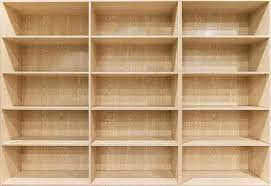Shelf It Right: A Guide to Different Types of Shelving Units for Every Space
Shelving units are more than just functional storage solutions—they can be transformative elements in your home or office. Whether you’re looking to organize your books, display your prized collectibles, or optimize your workspace, the right shelving unit can make all the difference. With a variety of styles and materials available, choosing the perfect shelving unit can be a daunting task.
This guide will walk you through the different types of shelving units, helping you make informed decisions for every space in your home or office. Cofeemanga
1. Floating Shelves
Floating shelves offer a sleek, minimalist look by appearing to “float” without visible supports. These shelves are mounted directly to the wall, making them an excellent choice for small spaces where floor area is at a premium. Floating shelves are perfect for displaying decorative items, books, or even kitchen essentials. They are available in various materials, including wood, metal, and glass, and can be customized in different sizes and finishes to match your decor.
Pros:
- Clean, modern appearance.
- Saves floor space.
- Easy to install with proper wall anchors.
Cons:
- Limited weight capacity compared to more robust shelving options.
- May require wall reinforcement for heavier items.
2. Bookcases
Bookcases are classic shelving units designed specifically for storing books, though they can also be used for decorative purposes. They come in a variety of styles, from traditional to contemporary, and are available in multiple heights and widths. Bookcases can be freestanding or built-in, with options for adjustable shelves to accommodate different book sizes or other items.
Pros:
- Provides ample storage for books and other items.
- Available in a range of sizes and styles to fit different spaces.
- Can be customized with doors or glass panels.
Cons:
- Takes up floor space.
- Larger bookcases can be cumbersome to move.
3. Ladder Shelves
Ladder shelves feature a design that leans against the wall, resembling a ladder. This style is great for adding vertical storage without the need for wall mounting. Ladder shelves often come with a combination of open shelves and storage compartments, making them versatile for displaying books, plants, and other decorative items.
Pros:
- Compact and space-efficient.
- Adds a stylish, contemporary touch to any room.
- Easy to move and reposition.
Cons:
- Limited in weight capacity.
- Requires a wall for support.
4. Corner Shelves
Corner shelves are designed to fit snugly into the corners of a room, maximizing underutilized space. These shelves can be mounted on the wall or be freestanding units that fit into a corner. Corner shelves are ideal for small spaces where every inch counts and can be used to display a variety of items.
Pros:
- Efficient use of corner space.
- Can be wall-mounted or freestanding.
- Provides additional storage without taking up much room.
Cons:
- May have limited capacity for larger items.
- Can be awkward to reach depending on placement.
5. Modular Shelving Systems
Modular shelving systems are highly customizable and can be configured to fit various needs. These systems consist of individual units or components that can be rearranged or expanded over time. Modular shelving is ideal for dynamic spaces that require flexibility, such as home offices or living rooms.
Pros:
- Flexible and customizable.
- Can grow or change with your needs.
- Suitable for both residential and commercial spaces.
Cons:
- Can be expensive, depending on the configuration.
- May require more planning and assembly.
6. Wall-Mounted Shelves
Wall-mounted shelves are affixed directly to the wall, offering a streamlined look without taking up floor space. These shelves can be arranged in various patterns and heights to suit your storage and display needs. They are particularly useful in small rooms or for creating eye-catching feature walls.
Pros:
- Saves floor space.
- Can be arranged in customizable layouts.
- Ideal for small items and decorative pieces.
Cons:
- Requires wall installation.
- Limited weight capacity based on wall type and anchors used.
7. Industrial Shelving
Industrial shelving units are known for their sturdy, practical design, typically featuring metal frames and shelves made from wood or metal. Engineered to support substantial weights, these units are ideal for environments such as garages, warehouses, or any area where durability is crucial. In Tennessee, through sheet metal fabrication, these shelving units can be customized to meet specific load requirements and design preferences, ensuring both strength and functionality.
Pros:
- Extremely durable and sturdy.
- Ideal for heavy or bulky items.
- Often has a trendy, industrial aesthetic.
Cons:
- May not suit all decor styles.
- Can be heavy and difficult to move.
8. Glass Shelves
Glass shelves offer a chic, modern appearance that can make a room look more open and airy. They are often used for displaying collectibles or for use in contemporary bathroom settings. Glass shelves can be framed in metal or wood for added stability and style.
Pros:
- Provides a clean, modern look.
- Creates a sense of openness.
- Easy to clean and maintain.
Cons:
- Can show dust and smudges.
- Limited weight capacity.
Conclusion
Choosing the right shelving unit depends on your space, storage needs, and aesthetic preferences. From floating shelves that add a touch of modern elegance to industrial units built for heavy-duty storage, there is a shelving solution for every room and purpose. Consider the unique characteristics of each type and how they align with your needs to make the best choice for your space. With the right shelving unit, you can enhance both the functionality and style of your home or office.






